| |
Drugs for Alopecia
|
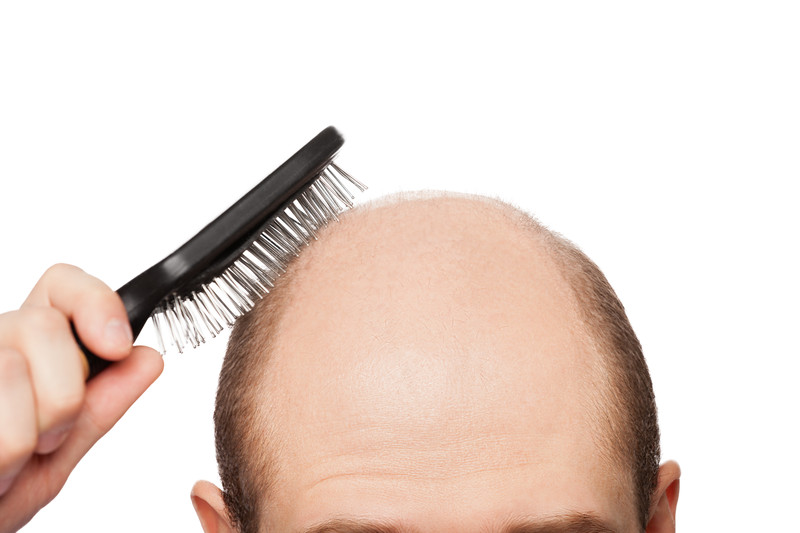 |
Hair loss
|
Most people normally shed 50 to 100 hairs a day. This usually doesn't cause noticeable thinning of scalp hair because new hair is growing in at the same time. Hair loss, baldness or alopecia occurs when this cycle of hair growth and shedding is disrupted or when the hair follicle is destroyed and replaced with scar tissue.
|
|
The exact cause of hair loss may not be fully understood, but it's usually related to one or more of the following factors:
|
- Family history (heredity), especially for male-pattern baldness
- Hormonal changes (e.g. pregnancy, childbirth or the onset of menopause)
- Certain medical conditions (e.g. thyroid disorders, diabetes, anemia, Systemic Lupus Erythematosus (SLE), sarcoidosis with skin involvement, and some local conditions such as tinea infection of scalp, lichen planus, and Trichotillomania (a disorder causes people to repeatedly pull out their own hair))
- Certain treatment (e.g. cancer treatment (chemotherapy and radiation therapy), blood thinners, high dose vitamin A, drug for arthritis, depression, heart problems and high blood pressure, birth control pills and anabolic steroids (steroids taken to build muscle and improve athletic performance))
- Severe emotional and physical stress
- Nutritional deficiencies (not enough protein or iron, eating disorder such as anorexia and bulimia, and weigh lost)
|
| |
Androgenetic alopecia
Androgenetic alopecia is the most common type of progressive hair loss. It is also known as male-pattern baldness, female-pattern baldness, or just common baldness. Androgenetic alopecia is caused by a combination of genetic and hormonal factors. Dihydrotestosterone (DHT) is the main hormone responsible for androgenetic alopecia in genetically susceptible individuals. DHT causes scalp hair loss by inducing a change in the hair follicles on the scalp. The hairs produced by the affected follicles become progressively smaller in diameter, shorter in length and lighter in colour until eventually the follicles shrink completely and stop producing hair.
|
|
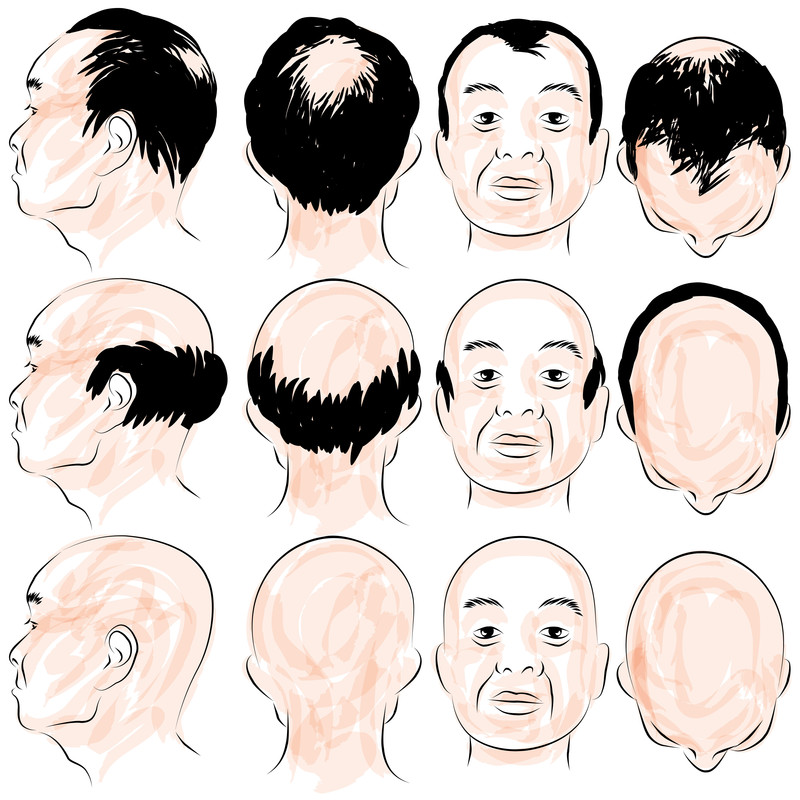
|
Male-pattern baldness can begin as early as puberty, and affects around half of all men by 50 years of age. It generally follows a pattern of a receding hairline, followed by thinning of the hair on the crown and temples, resulting in partial or complete baldness. In female-pattern baldness, hair usually only thins on top of the head. It tends to be more noticeable in women who have been through the menopause.
|
Besides Androgenetic alopecia, there are other forms of hair loss such as Alopecia Areata (AA), Telogen Effluvium (TE).
|
Alopecia areata
|
|
Alopecia areata most frequently presents as a single round patch (about the size of a large coin) or multiple patches of hair loss that may coalesce into larger areas of alopecia. They usually appear on the scalp but can occur anywhere on the body. It can occur at any age, but mostly affects teenagers and young adults. In alopecia areata, hair is lost because it is affected by inflammation. The cause of this inflammation is unknown but it is thought that the immune system, the natural defence which normally protects the body from infections and other diseases, may attack the growing hair. Why this might happen is not fully understood, nor is it known why only localised areas are affected and why the hair usually regrows again.
|
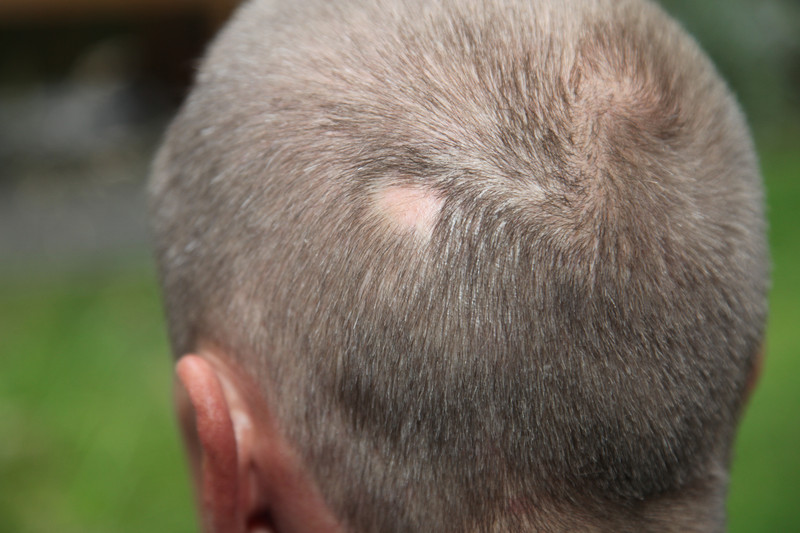
|
Telogen effluvium
In telogen effluvium (TE), hair density decreases resulting in reduced volume of hair. The decrease of hair density is due to marked increase in hairs shed each day, an increased proportion of hairs shift from the growing phase (anagen) to the shedding phase (telogen). Normally only 10% of the scalp hair is in the telogen phase, but in telogen effluvium this increases to 30% or more. The cause of TE is due to a disturbance of the normal hair cycle. Common triggers of telogen effluvium include childbirth, severe trauma or illness, a stressful or major life event (such as losing a loved one), marked weight loss and extreme dieting, a severe skin problem affecting the scalp, a new medication or withdrawal of a hormone treatment.
|
|
▲ back to top
Treatment for alopecia |
|
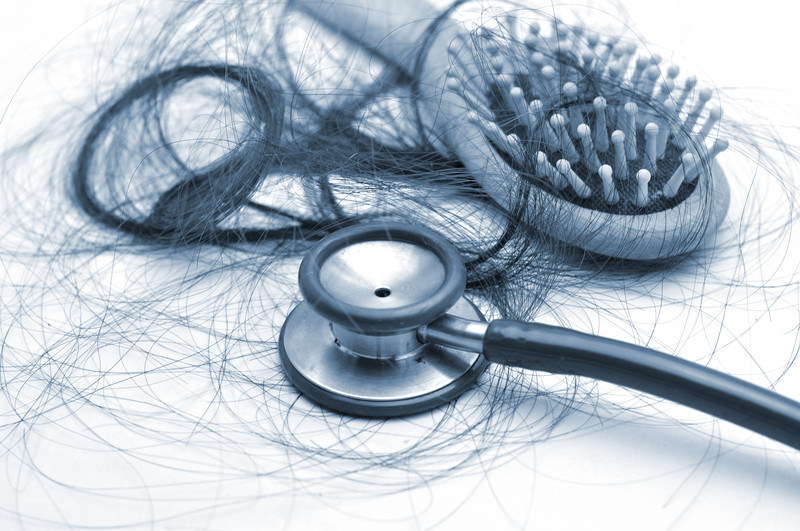
|
Many cases of hair loss are temporary; while some hair loss is permanent. Some are natural part of ageing and do not need treatment; some are part of the process of medical conditions which will resolve as the medical conditions are treated; whereas for some conditions, treatment are available.
|
Hair loss can have an emotional impact, so you may want to look at treatment if you're uncomfortable with your appearance. The goals of treatment are to promote hair growth, slow hair loss or hide hair loss. Drug treatments for some types of hair loss are available.
|
- For telogen effluvium it usually resolves completely without any intervention, as the normal length of telogen is approximately 100 days (3 to 6 months) after which period the hair starts growing again (anagen phase).
- For alopecia areata hair may regrow without treatment within a year. There is drug for treating alopecia areata e.g. corticosteroid, it is used for reducing inflammation and suppress immune system.
- For androgenic alopecia, drugs treatments are available.
|
In addition to drug treatment there are other available treatments such as surgery, laser therapy, and wigs. Your doctor may suggest a combination of these approaches in order to get the best results.
|
|
|
▲ back to top
Drugs for alopecia
|
|
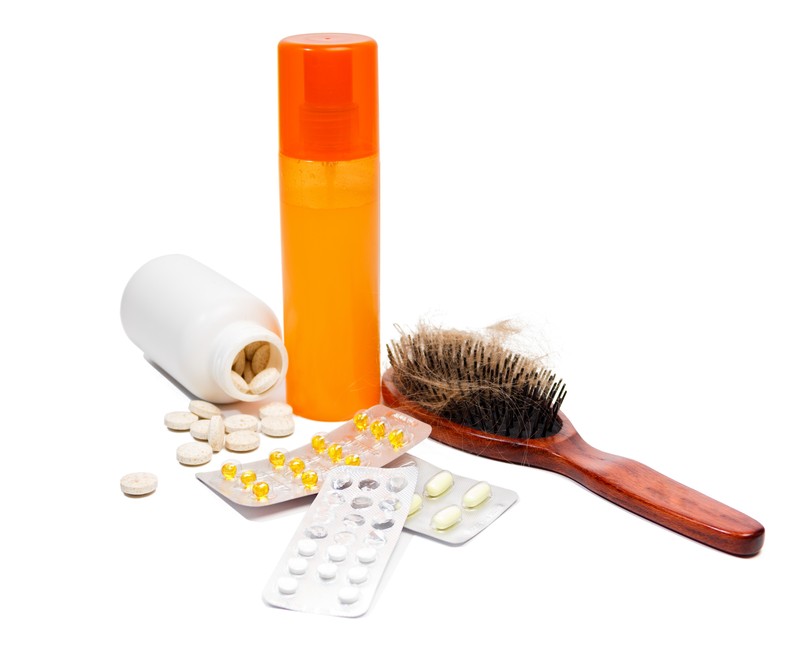 |
Drugs for Androgenetic Alopecia
|
Two medicines, namely finasteride and minoxidil, are used in the treatment of male-pattern baldness. Minoxidil is currently the only medicine available to treat female-pattern baldness.
|
Finasteride is available as oral tablets which are only used for men. It works by preventing the hormone testosterone being converted to the hormone dihydrotestosterone (DHT). DHT causes the hair follicles to shrink, so blocking its production allows the hair follicles to regain their normal size. It usually takes three to six months of continuously using finasteride before any effect is seen. The balding process usually resumes within six to twelve months if treatment is stopped.
|
Minoxidil is available as topical preparations (e.g. topical solution/lotion, and foam) which may be used for men and women. It is applied directly to the scalp. It's not clear how minoxidil works. It usually needs to be used for several months before any effect is seen. The balding process will usually resume if treatment with minoxidil is stopped. The re-grown hair may fall out three to four months after treatment is stopped.
|
Finasteride tablets are prescription only medicines, whereas topical preparations containing not more than 5% of minoxidil are pharmacy only medicines. It is important to seek dermatologist's opinion or medical advice to identify any underlying causes before starting any treatment.
|
Drugs for Alopecia Areata
|
Although there is neither a cure for alopecia areata nor drugs approved for its treatment, some people find that medications approved for other purposes can help hair grow back, at least temporarily. Intralesional corticosteroids stimulate hair regrowth at the site of injection and may be of benefit for limited patchy hair loss. Side effect of intralesional corticosteroid injection includes increased risk of infection, headache, joint pain and injection site reaction. Oral pulsed or continuous corticosteroids may be used in severe progressive cases. For side effect of oral corticosteroids, please refer to the Health Information on Oral Corticosteroid at following website.
http://www.drugoffice.gov.hk/eps/do/en/consumer/news_informations/dm_02.html
Both intralesional and oral corticosteroid are prescription only medicines.
|
|
▲ back to top
Common side effects and precautions
|
Drugs for Alopecia
|
Common side effects
|
Precautions
|
| 1. |
Finasteride (oral)
|
- impotence
- decreased libido
- ejaculation disorders
- breast tenderness and enlargement
- testicular pain
|
- Use with caution in hepatic impairment.
- Patients should be evaluated for prostatic carcinoma before and during therapy.
- Contra-indicated in women who are or may become pregnant.
- Women who are or may become pregnant should avoid handling crushed or broken tablets of finasteride.
- Use of a condom is recommended if sexual partner is pregnant or likely to become pregnant.
- Cases of male breast cancer have been reported.
- May increase the risk of high-grade prostate cancer.
|
| 2. |
Minoxidil (topical)
|
- contact dermatitis
- itching
- local burning
- flushing
- changes in hair colour or texture
- headache
|
- Should be restricted to the scalp. Do not apply on other parts of the body.
- Avoid contact with eyes, mouth and mucous membranes, broken, infected, shaved, or inflamed skin.
- Avoid inhalation of spray mist when spray applicator is used.
- Avoid occlusive dressings and topical drugs which enhance absorption.
- Discontinue if increased hair loss persists for more than 2 weeks.
- Users should discontinue treatment if there is no improvement after one year.
- Avoid in pregnancy and lactation.
- Contraindicated in user with treated or untreated hypertension.
|
|
|
▲ back to top
General advice
|
|
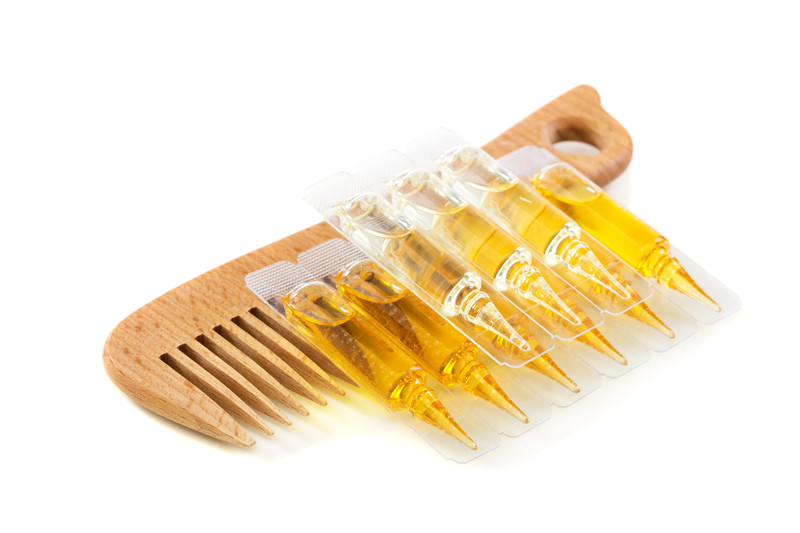 |
-
Eat a nutritionally balanced diet. If you are otherwise well-nourished, taking nutritional supplements has not been shown to be helpful.
- Avoid tight hairstyles, such as braids, buns or ponytails.
- Avoid compulsively twisting, rubbing or pulling your hair.
- Treat your hair gently when washing and brushing. A wide-toothed comb may help prevent pulling out hair.
- Avoid harsh treatments such as hot rollers, curling irons, hot oil treatments and permanents.
|
|
▲ back to top
Communication with your doctor
|
|
 |
|
- Communicate with your doctor for the best treatment option. Your doctor will prescribe the most appropriate drugs for you after considering your condition and your response to the drugs.
- Watch out for any unusual and serious side effects that develop. If you experience any such symptoms, contact your doctor immediately.
|
- Promptly report to your doctor any changes in breast tissue such as lumps, pain, or nipple discharge during the use of finasteride tablets.
- Inform your doctor that you are pregnant or breast feeding as minoxidil topical preparations should not be used by women who are pregnant or breast feeding.
- Have regular medical follow-up as advised by your doctor.
|
|
▲ back to top
Storage of Drugs for Alopecia |
|
Drugs for alopecia should be kept in a cool and dry place. Unless specified on the label, medicines should not be stored in refrigerators. Furthermore, drugs for alopecia should be kept properly in places unreachable by children to prevent accidental ingestion.
|
|
▲ back to top
|
|
Acknowledgement: The Drug Office would like to thank the Professional Development and Quality Assurance (PD&QA) for their valuable contribution to the preparation of this article.
|
|
|
|
|


